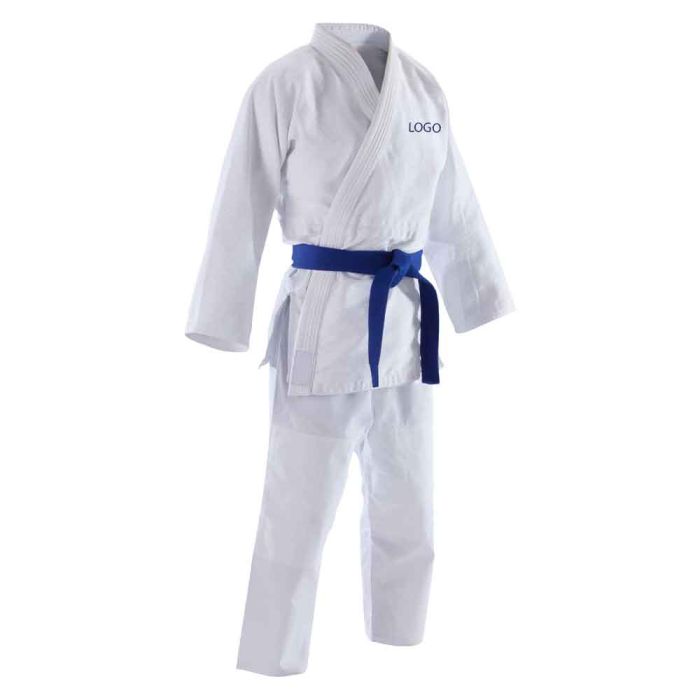Judo Gi
The gi in Judo is an essential garment that embodies the tradition and functionality of this esteemed martial art. Originating from Japan, the Judo gi, also known as a judogi, is designed to withstand the physical demands of Judo practice and competition while adhering to traditional standards of attire.
Material and Construction: A Judo gi is typically made from high-quality, durable cotton fabric or a cotton-polyester blend. The material is chosen for its strength and resilience, as it must endure the rigorous gripping, throwing, and pulling inherent to Judo. The fabric is often woven in a distinctive, tight weave that enhances durability and provides a firm grip for both the wearer and their opponents. The gi is usually heavy, with a thicker fabric compared to other martial arts uniforms, to ensure it holds up under intense physical activity.
Design and Fit: The design of the Judo gi includes a jacket, pants, and a belt, all crafted with specific features to facilitate the sport. The jacket is designed with reinforced stitching at critical stress points, such as the collar and seams, to resist tearing. The fit is generally more relaxed than in other martial arts, allowing for a full range of motion while maintaining compliance with competition standards. The pants are also reinforced, particularly at the knees, to endure the friction from mat surfaces and frequent use.
Functionality and Tradition: The gi’s design includes practical elements like a wide, sturdy collar, which is crucial for gripping during throws and holds. The belt, or obi, signifies rank and is worn securely to ensure the gi remains in place during practice and competition.
Aesthetics and Regulations: Judo gis are often available in traditional colors such as white and blue. These colors are not only classic but also align with competition regulations that require specific uniform standards.
Overall, the Judo gi is a robust and functional garment that reflects the discipline and heritage of Judo. Its construction, fit, and design are tailored to support practitioners in their training and competitive endeavors while respecting the art’s traditional roots.







